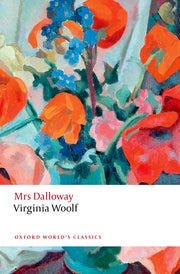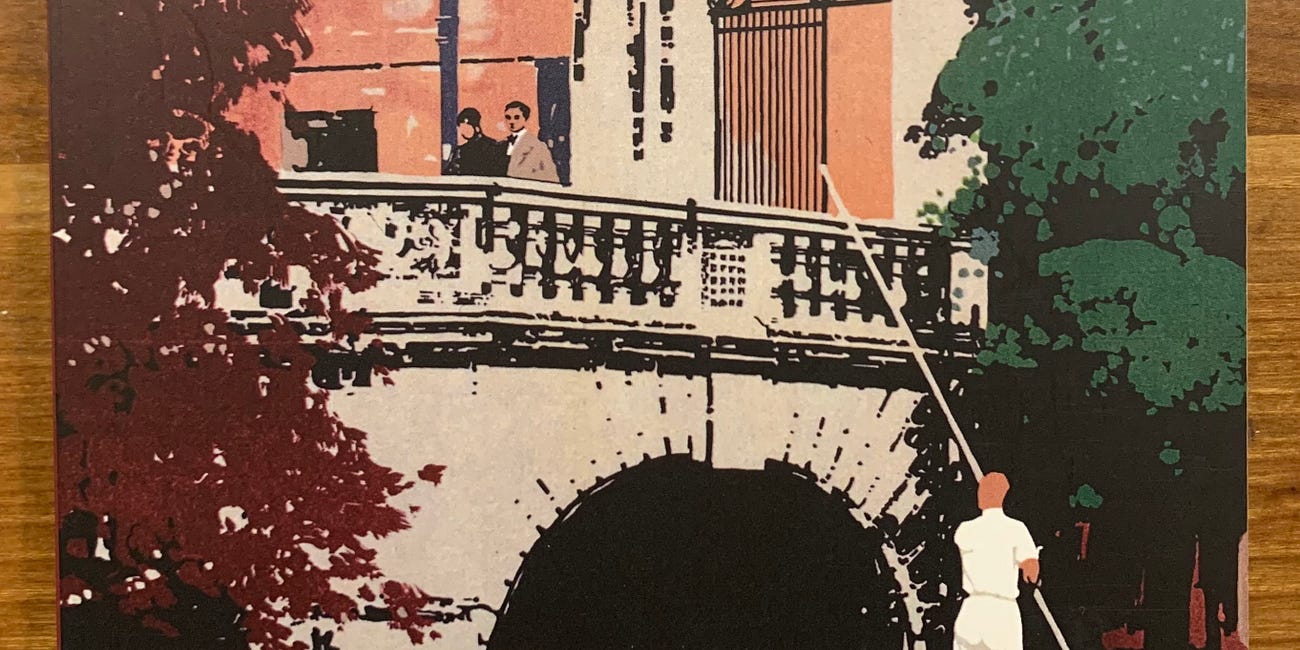What exactly is a middlebrow novel, anyway?
Plus, why Virginia Woolf read Elizabeth von Arnim's novels in secret, 20th-century book club plans and Cambridge events.
Hello! Cambridge Ladies’ Dining Society is celebrating an amazing 5,000+ subscribers this month. Thank you so much for signing up and allowing me to invade your inbox – and if you’ve been enjoying the writing, please consider a paid subscription, which enables me to keep doing this work and gives you access to the 20th-century Book Club and to the full archive, including The Fascinating Miss Pym and ‘Charming, violent and gifted’ Complimentary subscriptions are always available (just email me). But however and whatever you choose to read, I am very pleased you’re here.
Mid-century writing and the middlebrow
Thanks for all the generous and well-read comments on last week’s 20th-Century Book Club post, and I’ve been busy compiling a list of all your fantastic suggestions for future reading and recommendations. Do please keep sending them in, and read on to find out the first three novels we’ll be reading here in 2025. But firstly, this week I’m wondering what is meant by calling a novel middlebrow, and who decides, anyway? (PS I’ve edited this post to include more information on the three novels coming up.)

In the UK and Ireland, the use of ‘middlebrow’ as a term is closely connected to anxieties around culture in the 1920s and 1930s. The word first appeared in the early 1920s, it seems. ‘Highbrow’ in the sense of intellectual had been in familiar use since the late 19th century, originally intended as praise, later used with hostility: Baden-Powell warned British Boy Scouts against ‘horses, wine, women and highbrows.’1 The unmistakably pejorative term ‘lowbrow’ emerged in the early 1900s, associated with working-class entertainment, but what about ‘middlebrow’? The satirical magazine Punch is credited with its first appearance in print in 1925: ‘The B.B.C. claims to have discovered a new type, “the middlebrow”. It consists of people who are hoping that some day they will get used to the stuff that they ought to like’.2
The British Broadcasting Company was founded as a private company in 1922 (later it became the non-commercial broadcaster known as the BBC). 1922 was also when Elizabeth von Arnim’s The Enchanted April was first published, the same year as James Joyce’s Ulysses and T.S. Eliot’s The Waste Land.3 Less controversial than those works, The Enchanted April failed to find approval among some highbrow literary critics. Rebecca West stated that the novel was ‘in the nature of a disaster’ and that the writing of the author known simply as ‘Elizabeth’ was outdated. It was a sly dig at von Arnim for still trading on the fame she had gained through her bestselling Elizabeth and her German Garden, first published in 1898. (See my post ‘Wistaria and Sunshine’ here.)
The fact that von Arnim was a rival for the affections of H.G. Wells might possibly have been a factor in West’s dismissal of The Enchanted April. But even Katherine Mansfield (who was von Arnim’s cousin, for heaven’s sake) privately called it ‘a sad tinkle from a music box’, though in one of the last letters she ever wrote, she told von Arnim that she loved the novel, and ‘the only other person who could have written it is Mozart’.4
One author and literary critic who was notably reluctant to praise The Enchanted April in public was Virginia Woolf. But she privately admitted to Ethel Smyth that Elizabeth von Arnim’s novels made her ‘shout with laughter, some of her sayings are absolutely top hole: as good as Dickens.’ As Isobel Maddison points out, Charles Dickens is described as ‘a complete and representative highbrow’ in Woolf’s essay ‘Middlebrow’ (written in the 1930s and published posthumously in 1942).
Elizabeth von Arnim was well aware of how she was persistently underestimated by serious authors and critics, who were suspicious of how enjoyable her novels were. In The Enchanted April she knowingly pokes fun at literary cultures, from the aspiring highbrow Mrs Fisher, so nostalgic for her pompous Victorian poets, to the lowbrow erotic novels of Frederick Arbuthnot. She expects her readers to get the joke.
‘Most now acknowledge, for instance, the strain of ironic consciousness at work in Jane Austen’s novels,’ writes Maddison in her introduction to the 2022 Oxford World’s Classics edition. ‘Few, as yet, seem ready to recognise the similar approach and structure of feeling created by writing such as that of von Arnim.’
Further reading
Nicola Beauman, A Very Great Profession: The Woman’s Novel 1914-39 (Persephone, 2008); Erica Brown, Comedy and the Feminine Middlebrow Novel (Pickering & Chatto, 2014); Nicola Humble, The Feminine Middlebrow Novel, 1920s to 1950s (OUP, 2021); Isobel Maddison, Elizabeth von Arnim: Beyond the German Garden (Ashgate, 2013); Virginia Woolf, ‘Middlebrow’, 1942, in Collected Essays (Hogarth Press, 1966), vol 2.
A word of thanks
To
and for suggesting ways to stream Mike Newell’s Enchanted April (1991) in the UK (YouTube link here).Thanks also to
for sending me this lovely pictorial glimpse of wisteria season in Venice. Her latest book The New Romantic Garden is published by Rizzoli on 18 February 2025, and is now available for pre-order. It might help the less green-fingered among us turn our neglected back yards into lush gardens that Elizabeth von Arnim would be thrilled by (and if not, we can always enjoy looking at Jo’s pictures).‘Slow reading is having a bit of a moment on Substack,’ writes
. I am very grateful to him for kindly including our 20th-Century Book Club in the ‘February reading’ section of his wonderful Endnotes #8 last week.- has written a brilliant dissertation on Elizabeth Jenkins, and I’m delighted that he has introduced me to one of her less well-known novels, Honey (1968), in his post Bring back Elizabeth Jenkins. ‘Books about so-called “middlebrow” women’s writing typically give her little, if any, space,’ he writes. ‘It really is time for Elizabeth Jenkins to get the recognition she deserves.’ Hear, hear!
20th-Century Book Club reading plans
HUGE thanks for all your brilliant suggestions. We’ll come back to Jenkins and 1940/50s novels presently, but for the next six months or so we’ll be focussing on interwar novels from the 1920s to the mid-1930s. Are they middlebrow or not? You decide! Here’s a taster of what the critics say:
February–March 2025 Sylvia Townsend Warner, Lolly Willowes (1926): ‘Sylvia Townsend Warner’s 1926 novel Lolly Willowes is an act of defiance that gladdens the soul,’ writes Justine Jordan in the Guardian. ‘Put simply, it’s the story of a woman who becomes a witch – but it will subvert any expectations prompted by that synopsis as gleefully as it subverts every theme it touches on: gender roles, family love, social convention, religious propriety.’ The ‘chat’ thread of Lolly Willowes for paid subscribers starts next week, with a longer post in early March.
April–May 2025 R.C. Sheriff, The Fortnight in September (1931) It was reviewed glowingly when first published: ‘A lovely novel,’ declared the Daily Telegraph, ‘a little masterpiece’ wrote the Sunday Express. In America the Saturday Review of Literature thought that ‘nothing since Dickens has come closer to giving between covers the intrinsic spirit of England.’ You can read more on the website of Persephone Books, who have reissued it as a good quality ‘classic’ paperback and as an e-book.
June– July 2025 Dorothy L. Sayers, Gaudy Night (1935): ‘Set at Oxford in the fictional women’s college of Shrewsbury, “Gaudy Night” investigates a string of acts of vandalism and threatening letters sent to students and faculty. It’s a romance as much as a mystery, in which the cerebral Harriet comes to terms with possessing “both a heart and a brain.” (Nora Caplan-Bricker, New Yorker)
More bookish news
A new centenary edition of Mrs Dalloway by Virginia Woolf will be published by Oxford World’s Classics in May 2025. It will be fascinating to read Trudi Tate’s introduction to the historical context of this novel. (There’s a nice evocation of Woolf doing her final proof-corrections on Mrs Dalloway a hundred years ago on Kathleen Donnelly’s blog, ‘Such Friends’).
- ’s slow read of To the Lighthouse (1927) has just started, and you can catch up here. Her articles on Virginia Woolf are excellent.
Welcome to Substack,
, by Caroline Sanderson: her previews of the best new nonfiction books are not to be missed. I enjoyed this overview of books about heroes of our time. Also to , co-author with Suzannah Lipscomb of What is History, Now? (W&N, 2021). Her newsletter has a particularly apt slogan for us this week: ‘high low history straight to your inbox.’If you’re in Cambridge on 20th February,
will be at the CUP bookshop at 1 Trinity Street to launch the paperback of Literature for the People, about the Macmillan brothers whose successful bookselling and publishing business began on this very spot. You can book a ticket here. On 21st Feb there’s a great-sounding lecture by Sandi Toksvig called ‘Eve’s Byte of the Apple’ in the Darwin Lecture Series 2025 (all lectures are later available on YouTube).I did enjoy this photo from last week of the Danish PM Mette Frederiksen dining at home with her three friends (who also happen to be Nordic leaders). I’m specially keen on those well stocked bookshelves.
Thanks so much for reading, and I’d love to get your thoughts on so-called middlebrow novels… what do you think of such descriptions? A sign of dated literary snobbery, or do they still have any relevance today?
Novels about Cambridge
Hello! and welcome to Cambridge Ladies’ Dining Society. This week’s post is a reading list of novels set in Cambridge, and I’m grateful for so many brilliant recommendations from you, dear readers. *I have now expanded this list* based on your helpful emails and Comments - thank you! Read on for my some of my favourite literary publications on this platform, and news of a new Substack directory for the best of bookish blogs.
Quoted in Isobel Maddison, Elizabeth von Arnim: Beyond the German Garden (Ashgate, 2013) p.8.
Phil Christman, ‘The Strange Undeath of Middlebrow’, The Hedgehog Review, Spring 2021.
Richmal Crompton’s Just William and Veleveteen Rabbit were also first published in 1922; it was a vintage year for literature.
Letters between Katherine Mansfield and John Middleton Murry (Virago, 1988), p.391.






Good questions about midddle-brow novels. I wonder if the term sometimes puts off readers, because they think the book might be flimsy or shallow. But of course many of the novels designated middle-brow are actually brilliant, clever, funny works - especially those by Elizabeth von Arnim and Sylvia Townsend Warner. Thanks so much for your reading programme for 2025 - it looks terrific. All those books are well worth studying.
Thanks so much for mentioning my edition of Mrs Dalloway, to be published by Oxford World’s Classics in May this year for the centenary of its first publication. We intend to launch the book in Cambridge in October. Details to follow on the Literature Cambridge website.
I was going to ask whether you'd read Woolf's tongue in cheek diatribe about middlebrows ('If any human being, man, woman, dog, cat or half-crushed worm dares call me "middlebrow" I will take my pen and stab him, dead.' Haha.) But of course you had!
Thank you very much for mentioning our group read of To the Lighthouse. I suppose if I'd planned more carefully, we would be doing Mrs Dalloway during the hundred year anniversary! Oh well. Lovely post, Ann! You've put a smile on my dial.